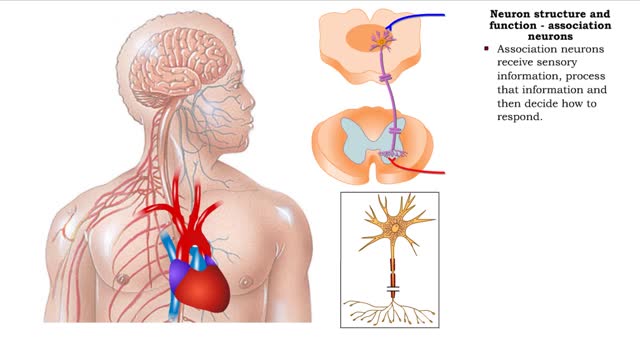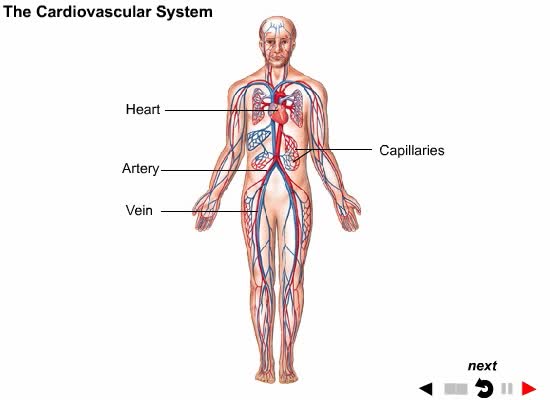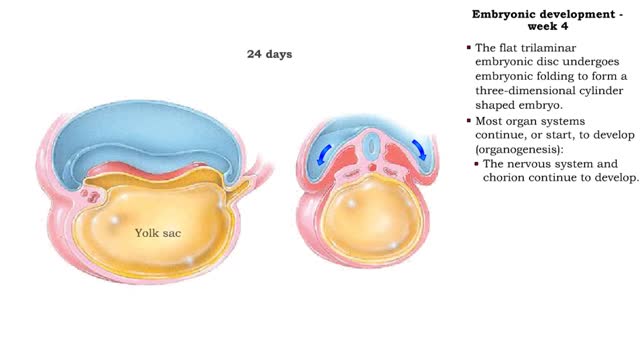Search Results
Results for: 'peripheral nervous systems'
Effect of blood chemistry - stimuli, hyperventilation response and hypoventilation response
By: HWC, Views: 6424
• Respiratory rate is effected by changes in: • Blood pH. • Blood Pco2. • Blood P02. • Chemoreceptors in the central and peripheral nervous systems closely monitor the Fr, CO2 and 02 levels in blood. • Changes in frequency of impulses from Chemoreceptors affect respiratory r...
Components of the Nervous System
By: Administrator, Views: 387
The nervous system is the part of an animal that coordinates its actions by transmitting signals to and from different parts of its body. The nervous system detects environmental changes that impact the body, then works in tandem with the endocrine system to respond to such events. Nervous tissue...
Neuron structure and function - sensory neurons, association neurons & motor neurons
By: HWC, Views: 6565
• The primary function of the nervous system is to provide rapid communication within the body to maintain homeostasis. • This function underlies behaviors, thinking and control of organ functions. • The basic functions of the nervous system are provided by: • Sensory neurons • ...
By: Administrator, Views: 9914
There are several types of neurons, three of which are: Motor neurons, Sensory neurons, Interneurons. The nervous system is usually described as having two interconnected divisions: the central nervous system (CNS) and the peripheral nervous system (PNS). CNS: Includes the brain and spinal...
Component of feedback systems & Communication and regulation of body systems
By: HWC, Views: 6684
• Primary responsibility for communication and regulation in the body is shared by the nervous and endocrine systems. • The two systems work alone or together in specialized physiological processes called feedback systems to maintain homeostasis. • Feedback systems - or loops - are ...
Introduction to Body Systems Animation
By: Administrator, Views: 685
Systems: A group of different organs functioning together for a common purpose.
Embryonic development - Week 4
By: HWC, Views: 6831
• The flat trilaminar embryonic disc undergoes embryonic folding to form a three-dimensional cylinder shaped embryo. • Most organ systems continue, or start, to develop (organogenesis): • The nervous system and chorion continue to develop. • The heart and the rest of the cardiovas...
Central Nervous System Animation
By: Administrator, Views: 9720
Consists of the brain and spinal cord. CNS receives impulses from throughout the body processes the information responds with an appropriate action Brain and spinal cord can be divided into: gray matter (unsheathed cell bodies and true dendrites) white matter (myelinated nerve fibers) ...
System organization - PPM system types (Somatic, Autonomic & Enteric) and Reflex arc types
By: HWC, Views: 6792
• The PNS consists of all nervous tissue outside of the CNS. • It is divided into three functional components: • Somatic nervous system (SNS) • Autonomic nervous system (ANS) • Enteric nervous system (ENS) • The SNS consists of: • Sensory neurons from skeletal muscles ...
Advertisement











